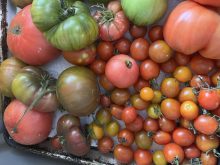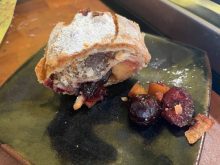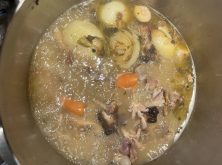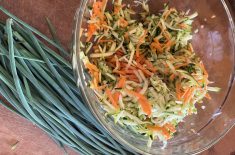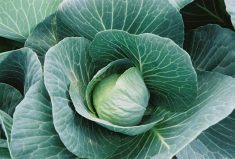My grandma on my mother’s side loved to go berry picking. She was a berry picker through and through, seeking out wild saskatoon and chokecherry bushes. Together, we often picked raspberries from canes at her home garden patch too. If there was anything she taught me I was qualified to do, it was picking raspberries.
One time I asked Grandma to make a saskatoon pie. She said, “not today,” as she smiled down at me. “I think it’s time we had a raspberry cobbler.”
As a result, I acquired a liking for her favourite dessert served warm from the oven, topped with vanilla ice cream.
Read Also

Gentle treatments for pain in the neck
Heading toward year-end, people unknowingly tense up against the cold and busyness, causing neck pain that can often be treated with appropriate support and gentle mobility, athletic therapist Kathlyn Hossack says.
What is a cobbler? My dictionary says a cobbler is a mender of boots and shoes, a cooling beverage of fruit juices or a mean person (not my grandma). There’s also a cobbler fish found in the Atlantic.
I found no reference to cobbler as an edible dessert, so I consulted Grandma’s recipe book, where cobbler is described as a deep-dish, single-crust, fruit dessert. Grandma has now gone to her reward, but I can still thank her for teaching me how to make raspberry cobbler.
Well, as I live and breathe, August days have arrived and they continue to get shorter. I’m told as human beings begin to age, we also become shorter. Do you agree?
I’m never short on something to write about, so let me thank you many times over for your emails, phone calls and gardening questions. I do appreciate hearing from you. I have a wagon loaded with welcome to everyone along the words trail with a tip o’ the hat.
Powder stems bleeding
A patented starchy powder made from potatoes appears to clot blood very quickly. “It works like a sponge for water molecules in blood, allowing platelets to clot almost instantly,” says Mark H. Ereth, an associate professor of anesthesiology at the Mayo Clinic in Rochester, Minn.
The powder is said to sidestep problems associated with other clotting agents during surgical procedures and is less expensive as well. Made from purified potato starch, it consists of tiny absorbent particles that can help surgeons sometimes avoid blood transfusions by preventing excessive bleeding.
“It’s particularly useful for combat doctors and paramedics who need to stabilize massive wounds to prevent shock and other complications from a major loss of blood,” Ereth says. Just think — all of that from a lowly potato.
Go fishing with a raw potato
A friend and I planned a fishing trip. He once asked me if I had any raw potato, and of course I did. I knew he wouldn’t want it for fishing bait, so curiosity directed me to ask its purpose. He said he “had a sour stomach” (from too much of what, I never inquired further).
Anyway, I wasn’t surprised when he took a piece of raw peeled potato, chewed it up and gave a swallow. A few minutes later he reported relief from his acidic stomach and indigestion.
I’ve known for years that diced raw potato applied directly over sunburn brings quick relief too.
Tips for successful fishing
Fishing is a pure joy of relaxing in the outdoors. As humans, we develop patterns of behaviour, and seldom do our patterns coincide with those of fish. Success in fishing means being versatile, so here are a variety of approaches you can try.
Fish are captive to their environment and are closely attuned to weather and water, the season, time of day and other factors. All this has a bearing on whether you catch fish at a particular time.
From sunset to one hour after the sun goes down during summer months, fishing can be great. During the cooler months, fishing is best from noon to three in the afternoon.
Generally, July is the worst month for fishing.
One of the best days to fish is on a cloudy day following a bright moonlit night the evening before, so look to the sky.
According to moon lore, the best days for fishing include the day before and the day after a quarter moon change as well as the day before and the day after each full moon.
Winds can affect fishing too, with the most favourable winds being from the south, southwest and west. East winds are unfavourable.
According to folklore, fish can sense weather changes, and on the day of the actual change, they mostly will not bite. Fish are said to be particularly active three days before a storm.
A wise old fisherman said to watch for a storm if insects are flying low and fish are jumping from the water to catch them. He also said to take note of the type of insect and try to catch some to use for bait.
Fish have no eyelids, but they have remarkable sight and can see up to 50 feet and more away. On cloudy days there is no bright light to distress fish, so they will feed near the surface. However, on bright sunny days any sudden light thrown on fish will cause them to quickly leave the area.
Fish also have a keen sense of smell and don’t like strong odours. A closely guarded secret, though, is that bait rubbed or mixed with anise oil or garden-grown lovage leaf juice is to their liking.
It’s also worth noting that some fish will feed on only one kind of insect or bait for lengthy periods. When that happens, it’s almost impossible to lure fish with any other bait.
After filleting your catch from a successful day of fishing, remember to bury fish guts deep into garden soil.
There’s so much more to say about fishing, but I’ll leave this section with the following, called the Fisher’s Poem:
When the wind is in the north,
The skillful fisher goes not forth,
When the wind is in the south,
It blows the bait in the fish’s mouth,
When the wind is in the east,
’Tis neither good for man nor beast,
When the wind is in the west,
Then fishing’s at its very best.
Something to remember about melons
I planted melons this year, and it’s a good thing because I really enjoy ripe, juicy cantaloupe. Early ones can ripen by mid-August and others will follow in hot pursuit.

Some people don’t like cantaloupe, not even the smell. The words, “eat melon alone, or leave it alone, because if you don’t, your stomach may moan,” apply to some folks who experience digestive problems when eating melons with other foods.
If melon does agree with you, it is best eaten with an empty stomach. Resist the urge to combine cantaloupe with yogurt or ice cream, unless you know such a combo agrees with your system. This info does not apply to eating watermelon.
Wood ash and soil pH
What does too much wood ash do? Wood ash has the ability to raise the pH of soil, that is, to sweeten it. Because of this, wood ash isn’t a good choice to put around acid-loving plants such as pine trees and other evergreens, azaleas, hibiscus, hydrangeas and blueberry plants.
The pH scale runs from 1 (very acidic) to 14 (very alkaline), with 7.2 designated as neutral. Much of the time in nature, soil pH values range from 4.0 to 8.3.
When testing for pH, take samples from various areas of the garden or field. If the results are too acidic or too alkaline, your crops may disappoint you.





